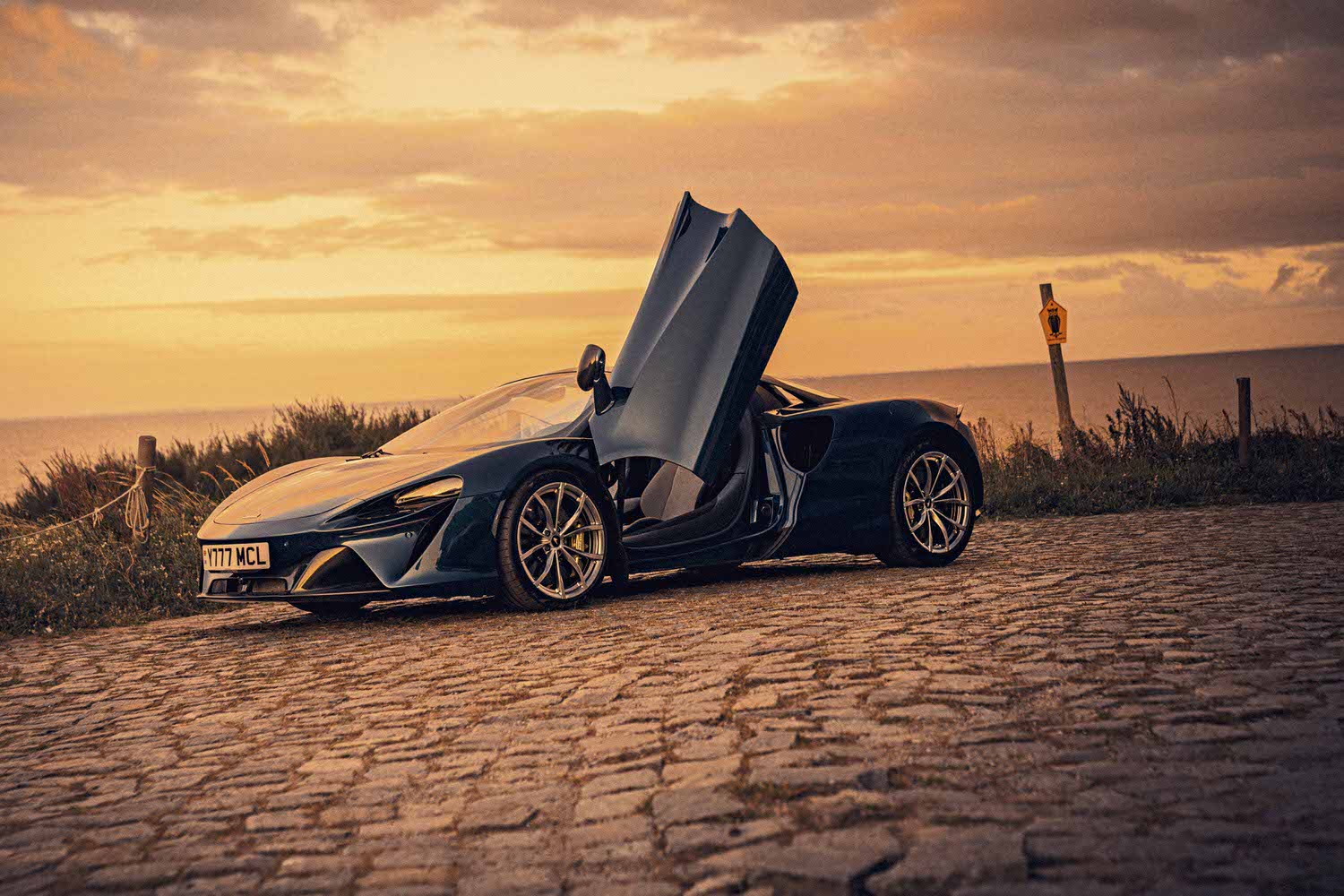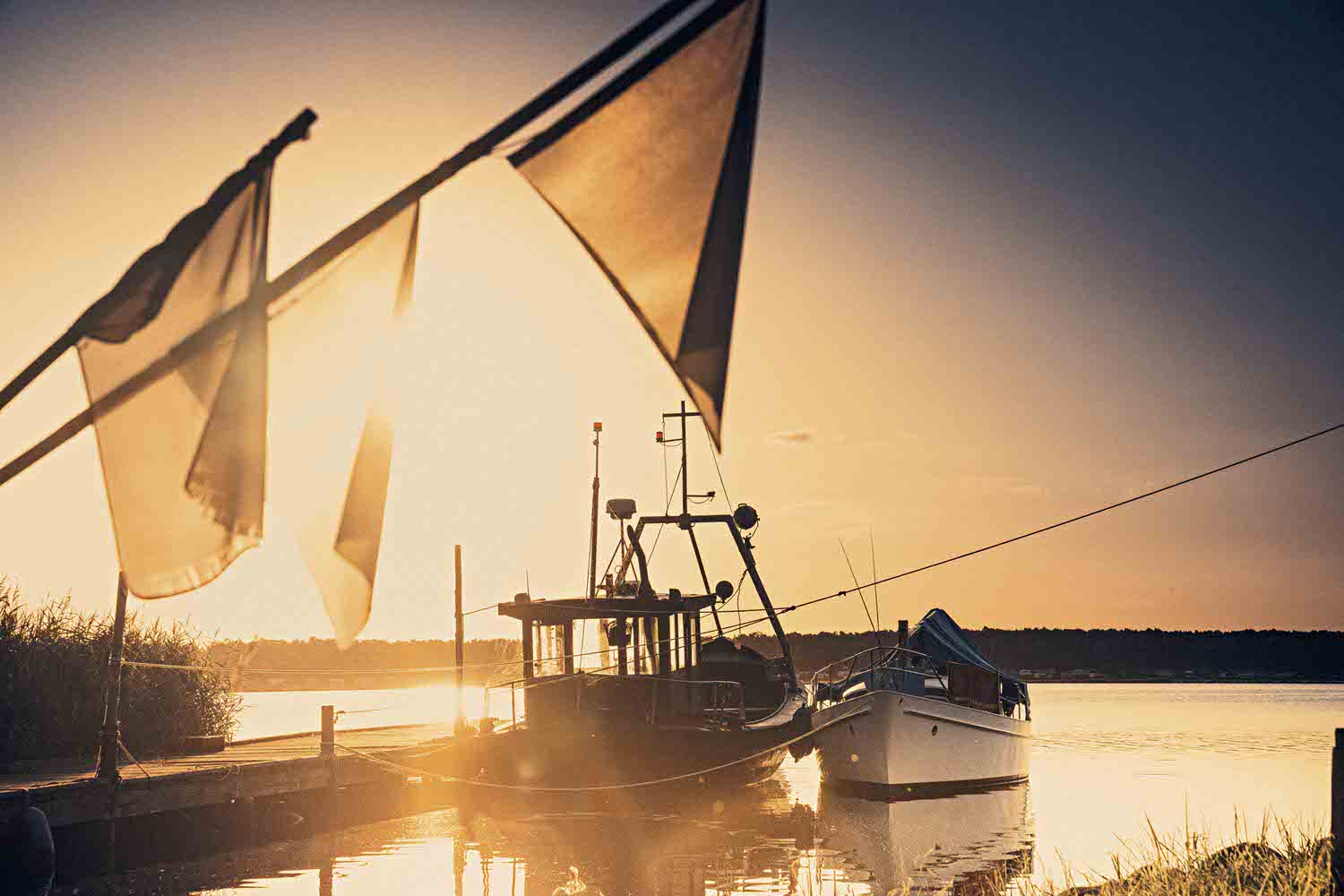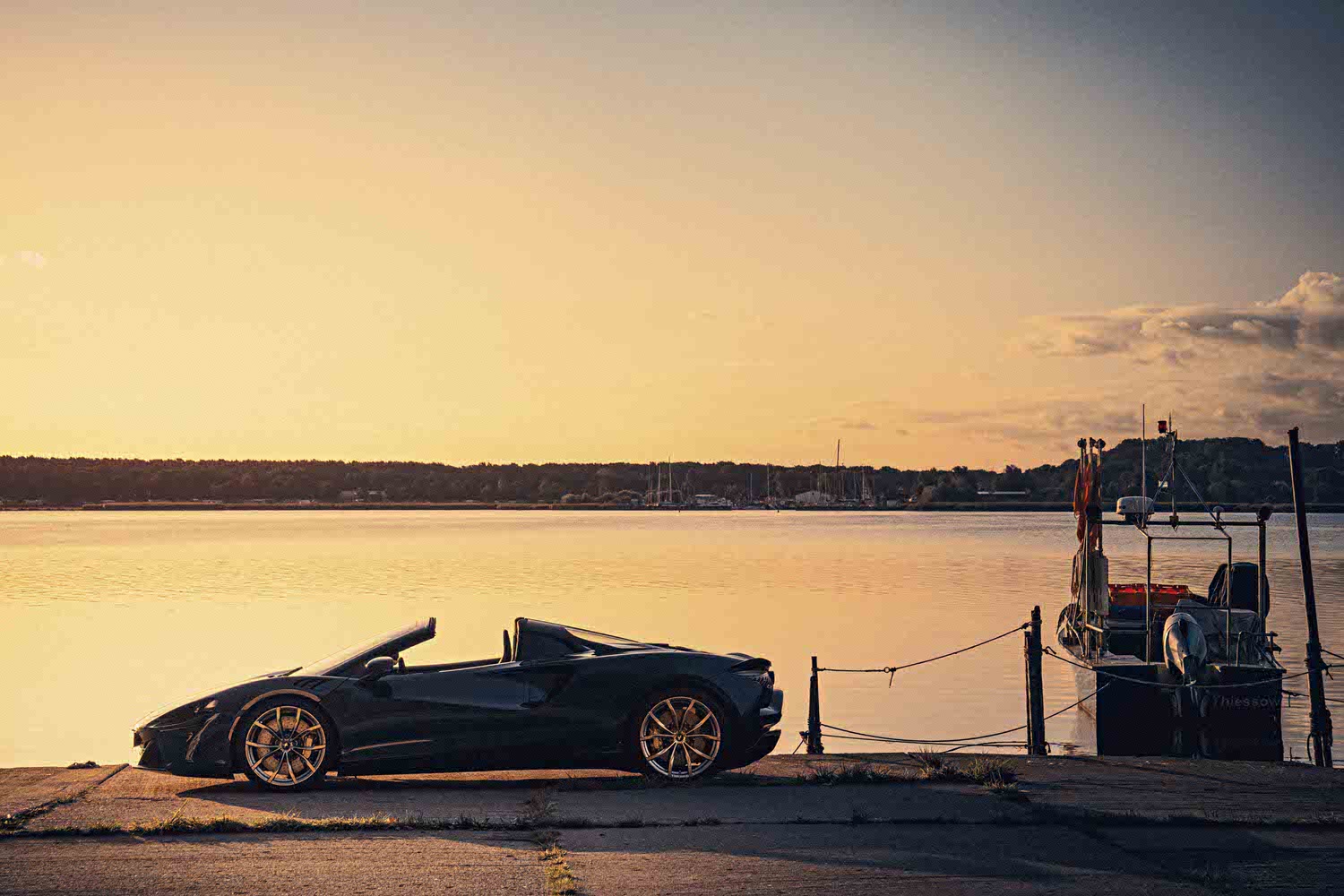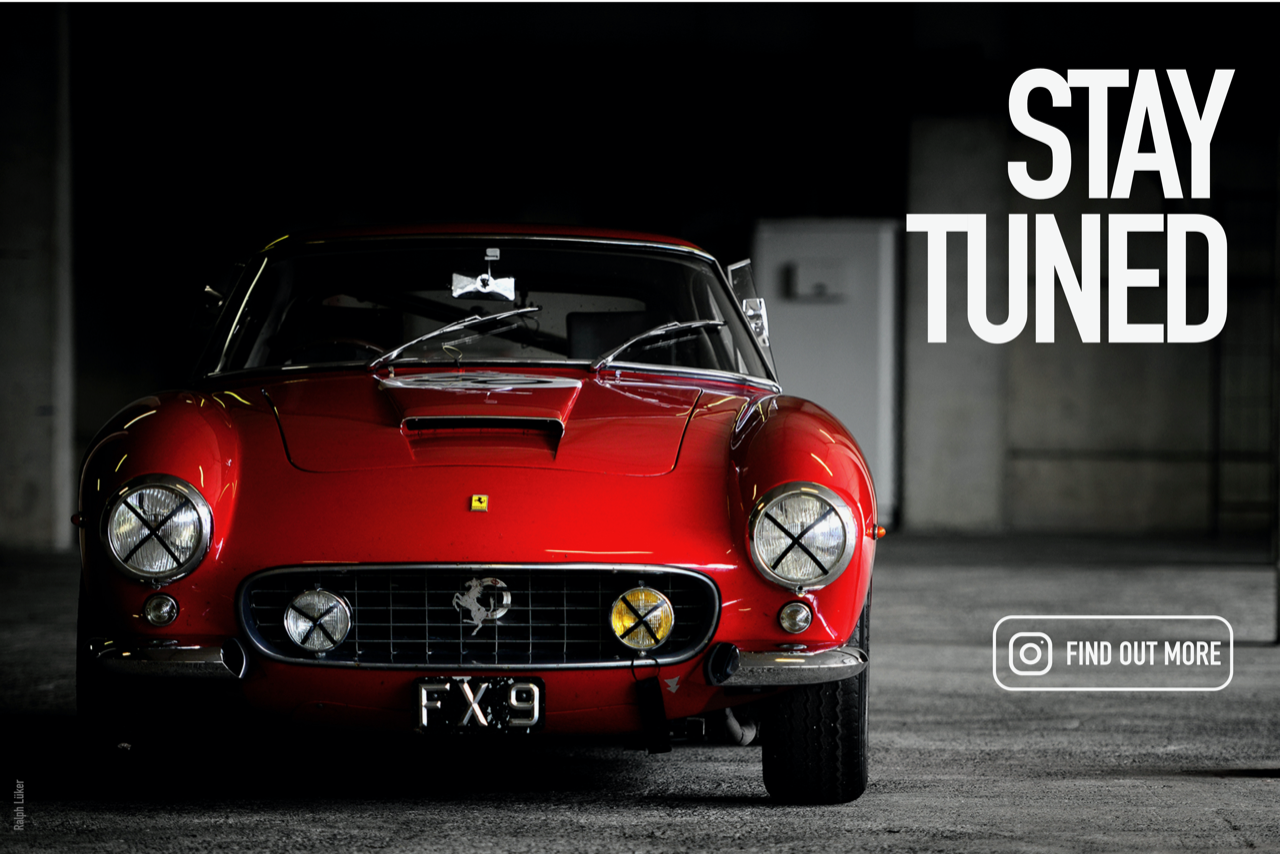Caspar David Friedrich went looking for the sublime in the stillness of Rügen. We found it in the McLaren Artura Spider – though it’s not exactly quiet.

Caspar David Friedrich needed a spiritual crisis and nine years to complete his painting The Monk by the Sea. He found the inspiration for it on Rügen during one of his long walks. In 1801 he sketched a scene in his notebook. Years later in his Dresden studio, he ruthlessly erased everything that wasn’t art – trees, fields, fishing nets. What remained was a strip of dune, a solitary monk, the Baltic Sea, nineteen seagulls and the sky. Today, art historians see it as perhaps the boldest painting of nineteenth-century Germany.

Morning light on Rügen. Just past five. The light is absolutely crazy! A spiritual crisis could not be further away. And then the mist begins drifting low across the ground, adding to the mystique. What a start to the day, to the story. The McLaren goes about its business: light, shadow, trees, curves. The German Avenue Road starts here on Rügen. Nearly 3,000 kilometers of country road lead you from one tree-lined boulevard to the next – all the way to Lake Constance. But we’re staying on the island, and the McLaren stays nearly hushed. A dignified English accent, you could say. It’s enjoying this Sunday morning on empty roads, though by now it’s starting to crave a bit more: more traction, more speed, more depth.
Its name: McLaren Artura Spider. And it’s really only here to spend three days doing nothing at all. Its main job was to carry its driver some 750 kilometers on the autobahn to Rügen – and then take him back again after the Rolex SailGP Germany in Sassnitz.

Unlike Friedrich, who tormented himself over his canvas – night or day, clear skies or overcast – with the McLaren everything is clear. The Artura isn’t just a visionary example of design and engineering (hybrid yet lightweight, aerodynamic), it also offers an uncompromising driving experience. This is not a hybrid for people who just want to soothe their conscience. Many miss the radical spirit in it – the kind you usually only find in a V8, V10 or V12. But you could call it, without exaggeration, the epic poet of long-haul blasts. And understanding that begins with the simple things. Anyone willing to cross that threshold between engineering and excess will truly grasp what the Artura is all about.

Quick burst in track mode. The Artura roars!
Stop at a campground parking lot. Dew on the caravans and tents, a stretch of nude beach behind them. Everything still asleep. Then a teenage boy appears. Faded T-shirt, pimples, worn-out Chucks. Behind him an old station wagon with a roof box. The kid edges closer.
“McLaren Artura?” he whispers.
A nod. – “The Spider.” – “Yeah, that’s right.”

He takes a step closer. Maybe a photo . . . ? Sure. Suddenly it all just pours out of him: “Three liters, V6, 120-degree bank angle. Shorter crankshaft, more stable, lighter. 8,500 rpm. Absolutely insane.” – “Excuse me?” – “The Artura engine,” he says.
Awkward silence – from the driver. What should I say? The educationally useless, “Do your parents know you’re talking to a stranger here?” Or maybe a compliment? Better to wait and see.
The teenager senses it, gets a little embarrassed, looks down. Says he had thought about studying mechanical engineering and designing sports cars. “And McLaren builds the coolest cars ever!” There he is again, the hyper-competent tech nerd: “Just this engine alone! The geometry makes it compact. Cylinder walls only seven millimeters thick. No liners. Totally wild!”

That it is. Totally wild. He goes on: “And the turbos in the hot V configuration. Shorter paths, less loss. Those three pipes at the back? People think it’s all exhaust. But the top one is the wastegate for the turbos. Vents the heat straight out the top so it doesn’t cook. Plus it adds an aero advantage, supports the trailing edge. Only McLaren would come up with that . . .”
He pauses for breath, pushes back his hood. Then says: “My parents think cars are pointless. Too loud, too much CO2. Vacations at the Baltic, camping. But this . . .” He breaks off, staring at the Artura.
Time for breakfast. A woman, probably his mother, waves from the camper. The teenager turns. “Thanks,” he says quietly, and trudges back to his parents.
The driver is left alone with the Artura, mutters something like “no problem”. Then rummages for his phone and jots the scene down. More or less as it happened.
You never know.
McLaren Artura Spider
- Powertrain twin-turbocharged V6, plug-in hybrid
- Combined Power 700 hp (515 kW) at 7,500 rpm
- Combined Torque 720 Nm at 2,250-7,000 rpm
- Weight 1,475 kg
- 0-100 km/h 3.0 s
- Top Speed 330 km/h (electronically limited)
TEXT & PHOTOS: Matthias Mederer – ramp pictures
rampstyle #36 – Beyond the Sea

Beyond the sea lies the unknown. And that’s exactly where we’ve always been drawn. Adventure beckons. Our imagination kicks in. “Somewhere beyond the sea . . .” – those are the opening lines to a song that has long since become the cultural soundtrack of our yearning. This magazine is a perfect match. And the courage to set out.
Dream big. Think wider. Go beyond. Find out more










